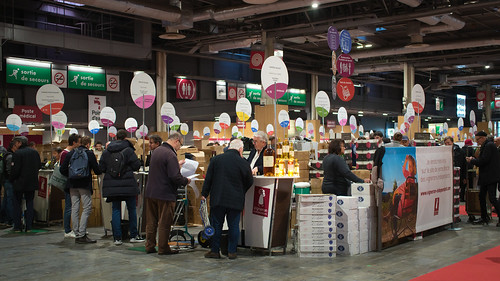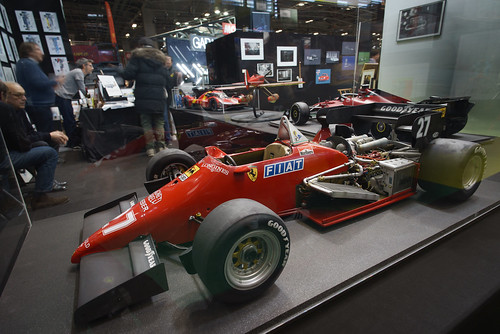Recently I've been taking a closer look at color management, color grading, and film emulations. When a question came up about the possibility of matching Hasselblad Phocus "Nature" image tones in other image processing software, because the commenter seems to very much appreciate this look and see's it as very "film like", I thought it'd be interesting to see what I could do in RawTherapee.
The original conversation centered around LUTs and considered having someone (a pro, for instance) create a Phocus "Nature" emulation for LR/PS. So that's where I started, where my target application would be RawTherapee in place of RentWare. The only problem was, how?
I looked at exporting .xml files that Hasselblad uses to manage colors, but no one seems to know what the format is. The one person talking about Phocus' .xml format indicated that all they could do was decode a file header, but that they had zero idea what the subsequent fields of information meant.
OK. Blocked on that path. There are not enough hours left in this life for me to reverse engineer something as potentially complex as all that
Then I read that Phocus software can open non-Hasselblad file formats and I thought *bingo*, all I needed to do was grab a HaldClut template and apply the Phocus preset/look and import it straight into RawTherapee.
I made HaldClut files for "Nature", "Product", and "Portrait"... and... nope... failure. Nothing looked quite as expected. Applying these new Cluts did nothing to images in RawTherapee. How could this be? Phocus presets/looks seemed useless. So, no cigar.
Darn. Now what? Decoding .xml was out. HaldClut templates were seemingly out, too. Perhaps the questioners idea of hiring a "pro" to come up with a color grade that matched Phocus' "Nature" was the best idea after all?
Being the cheapskate I am I couldn't let the idea go. Loading up a few .tiff files I sat down to take another this time longer whack at all things Hasselblad Phocus. Here's what I think I figured out.
Phocus -
- Imports Hasselblad RAW in the camera-original output format
- Performs a demosaic
- Applies a tone curve <- Important observation #1
- Applies a color grade <- Important observation #2
- Saves the resultant image as yet a second RAW-ish format (a 'blad specific dng or tiff called FFF)
- Then, and only then, provides users access to several Factory presets/looks as well as a suite of image controls for further processing an image
Then I considered the presets/looks and saw that various image processing tools were enabled. Thinking that this is where the Hasselblad color "magic" lay, I scrolled through these now enabled tools. Turns out these tools are simply image controls a user can now apply, such as exposure and tints and sharpness. With the exception of "Curves", NONE of the tools had any direct impact on color.
For instance "Product" and "Portrait" presets/looks modified sharpness one way or the other. I would have expected skin tone changes with the application of "Portrait" and maybe some color modifications with "Product." This wasn't at all the case. Further, applying the Factory "Nature" to an image showed only a gentle curves modification, but nothing else.
Fundamentally, Phocus is doing next to nothing color-wise when applying it's Factory presets/looks. These are not really "looks" as we might know them from using other manufacturers equipment and software.
Here's the trick/secret about Hasselblad Phocus: The software seems to assume the pre-applied tone curve and color grading are perfect starting points as is (see "Important observations #1 and #2 above).
This left me to consider the "Nature" preset/look. The "curve mode" determines changes in color and luminosity contrast. Let me set this aside for a moment and I'll come back to this shortly.
Now remember that both Phocus and LR/PS apply a demosaic, color base, tone curve, and a color grade also by default. For my purposes it seems safe to say the the AdobeStandard<camer specific>.dcp output is equivalent to what 'blad's Phocus gives.
Finally getting to the crux of the matter and fully appreciating that the base starting points between Phocus/LR/PS are similar enough for government work and borrowing LR/PS camera profiles into RawTherapee: To recreate Hasselblad Phocus Factory "Nature" look in RawTherapee could be as simple as applying the correct curve.
And it helps to recall something important about curve modes and the implications of choices I make. I noted that 'blad's software "Curves" was marked RGB. In practice, different curve modes in RawTherapee act differently in the way they distort colors as the luminosity curve shapes are modified.
In RawTherapee I discovered that choosing "Weighted-Standard" curve mode seems to be the Magic Ticket to matching Hasselblad Phocus RGB curve. Which is to say that Phocus "Curves" doesn't strictly implement "Standard RGB", hence the "Hasselblad color palette" that some people seem to rave about.
The following illustrates how little I modified RawTherapee "curves" to match Hasselblad's Phocus. It's not much, but it's enough to gently shift the colors as well as adding just the right amount of luminance contrast.
Here is my proof of concept in RawTherapee. I've checked this using various color combinations and the basic processing applies across the board. The following also illustrates how various curve modes (including "Standard RGB") affect color contrast and color distortion and in most cases fail to properly match Hasselblad Phocus "Nature".
To summarize, matching Hasselblad's Phocus "Nature" Factory preset/look in RawTherapee is, in the end, trivially easy.
- Open RAW image in RawTherapee (RT)
- Let RT demosaic the image as per normal
- Under RT Color Management select CameraProfile->Adobe->AdobeStandard<camera-specific>.dcp
- Under RT Color Management enable "Curve Tone", "Base", and "Look" tables
- Under RT Exposure apply a gentle "Weighted-Standard" curve (see above)
- Under RT LAB adjust Chromacity -1 or -2
- Save this sequence for later use
Lastly, if I select auto lens correction, my preferred vignette, and sharpening (a deconvolution - ie: Capture Sharpen) when I save the process steps the whole exercise of matching Hasselblad's Phocus Factory "Nature" preset/look in RawTherapee becomes a one button exercise.
All of which roundly exceeds expectations.













